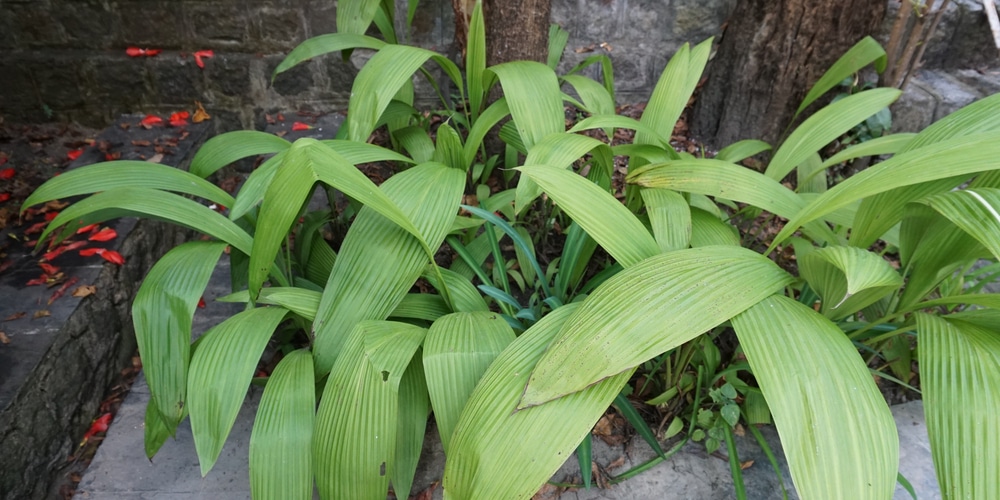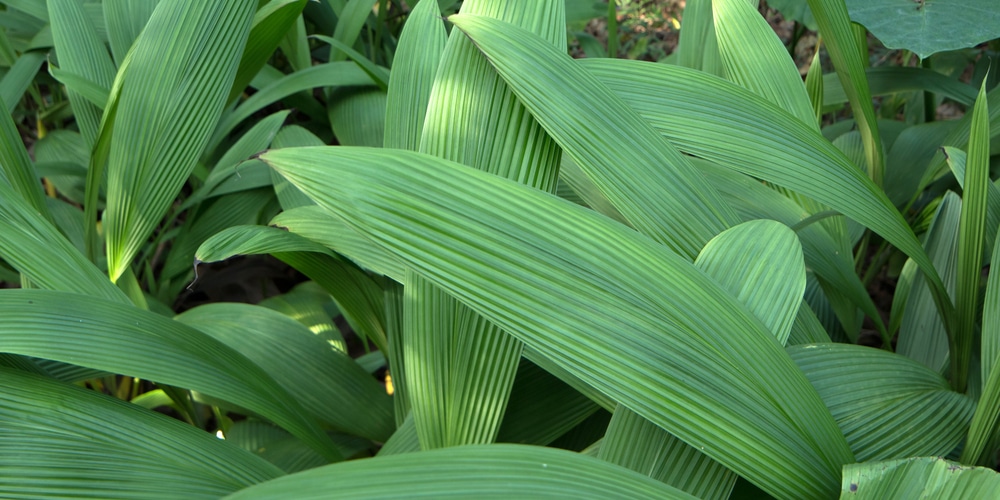Palm grass is a semi-evergreen plant that has dramatic foliage and can grow very large. It’s native to tropical regions of India and other parts of Asia. These plants have thick sword like leaves that are course and don’t look anything like grass.
Palm Grass has adapted well to various climates and is commonly grown outdoors, even in colder regions. However, it’s recommended that you don’t leave your plant outdoors if there’s frost on the ground.
Palm Grass can also be kept as a houseplant, as long as it’s placed near a window that gets enough sunlight. Let’s look at how to grow and care for palm grass.
What is Palm Grass?
Palm Grass is a tropical plant that’s native to tropical and sub-tropical regions of Asia. This plant is part of the Poaceae family and has the botanical name Setaria palmifolia.
Palm grass is a perennial that has deeply pleated course leaves. Each leaf can grow very up to 13 feet long, with a width of 25 inches. The foliage grows from a central crown and forms a large mound.
Palm grass gets very tall in its native environment. When grown in cooler regions, its growth will be stunted, and the plant is likely to grow to about 3 feet. There are reports of palm grass growing to between 8 and 10 feet tall in areas such as Florida and Miami. Although palm grass looks robust, it’s pretty tender and can be affected by frost.
Palm Grass produces cylindrical flowers that are a light green color. The blooms appear in spikes that are taller than the rest of the foliage. These plants flower throughout the summer months, but the flowers aren’t very eye-catching or impressive.
Palm Grass isn’t toxic to humans, pets, or livestock. It can be grown as part of a flower border, a container, or a woodland garden. It’s worth noting that Palm Grass can quickly spread as its flowers self-sow and spreads many seeds. Some homeowners find that these plants start to take over and need to be controlled.
Palm Grass Plant Growth and Care
Palm Grass is easy to care for as long as it’s planted in the right area. Get the basics right, and this plant will thrive. This plant grows in clumps and has rich green leaves.
Palm Grass is straightforward to grow. It can be planted out in the early spring when the weather starts to get warmer. These plants look great in a tropical border as they have a jungle look. They also look lovely in a container on a patio. Here are some tips to help you grow a lush Palm Grass plant:
Palm Grass Plant Growth and Care: Sunlight needs
Palm grass likes to grow in the full sun with some dabbled shade. As it’s a tropical plant, it likes warm, sunny areas. In areas of low light, or if kept as a houseplant, Palm Grass may start to drop leaves. These plants require ample sunlight to thrive.
If you live in a colder area, it may be best to grow your palm grass plant in a container and move it inside in the fall. Palm grass isn’t tolerant to frost.
Watering Requirements
Palm Grass likes to grow in damp, moist areas. These plants can tolerate drought but are generally healthier if they are regularly watered. Aim to keep the soil around your plant moist by watering your plant once or twice a week.
Palm Grass Plant Growth and Care: Soil type
Palm Grass thrives in soil that’s clay-like and heavy. Soil should be moist and able to retain water. That being said, palm grass can be affected by overwatering, and it doesn’t like to be left standing in water. Don’t plant palm grass in a waterlogged or boggy area.
Palm Grass Plant Growth and Care: Fertilizer
Palm Grass isn’t a heavy feeder and requires little to no fertilizer. Your plant should get all the nutrients it needs from the soil. If you’re growing palm grass in a container, you can repot your plant every couple of years. Use a good quality potting compost, which will provide your plant with the nutrients it needs.
Conclusion
Palm Grass is a nice, tropical plant that likes to be grown in sunny spots. It has thick, coarse leaves that have a pleated texture. These plants like dappled shade and moist soil.
Palm Grass flowers throughout the summer, and the seeds can spread. In some areas, Palm Grass is considered an invasive species. You can control the spread of palm grass by cutting off the flowers before the seeds have a chance to spread.

